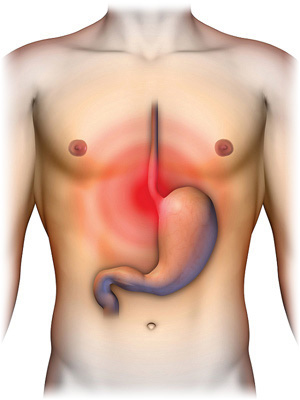Wednesday, 26 November 2014 12:42
By Wilson Tsai, M.D. • Special to the Times
As families gather for Thanksgiving dinner this week, about one in five of us will approach the meal with some trepidation because of the potential for heartburn.
It is estimated that one in five Americans suffers from heartburn, or gastroesophageal reflux disease (GERD). Symptoms of GERD include discomfort, regurgitation, sore throat, persistent cough and even chest pain, and can interfere with sleep or everyday activities.
Heartburn should not be ignored. Not only can it negatively affect your quality of life, it can lead to more serious conditions, including esophageal cancer, the fastest growing type of cancer in the United States today.
Thanksgiving Week is also GERD Awareness Week. Here are 10 things you need to know about heartburn/GERD:
1. Symptoms of GERD happen when stomach contents such as food, acid and bile back up into the esophagus because of a weak sphincter muscle at the bottom of the esophagus.
2. Some people have “trigger foods” that can bring on symptoms. Most commonly, these include fatty, spicy and acidic foods, such as coffee, chocolate, onions, tomatoes and citrus. Alcohol also can increase reflux.
3. GERD is a growing epidemic. Twenty percent of U.S. adults suffer from GERD.
4. Reflux symptoms can sometimes resemble the symptoms of a heart attack, which can be painful and frightening. Reflux often can be a burning sensation, while a heart attack may be more like pressure or a constriction.
5. Some lifestyle modifications can help reduce the severity and frequency of GERD. Risk factors include smoking, alcohol use, diet and obesity. Eating small, frequent meals and avoiding meals late at night can also help.
6. Up to 40 percent of people who take antacids and medications continue to have symptoms. It’s important at this point to see your doctor. It can be an indication of a more serious condition.
7. Prescription medications, such as Prilosec or Nexium, are meant to be taken for a maximum of 14 days. Medicines do not stop reflux or the progression of the disease. They just change the acidity of the reflux so it burns less.
Alleviating symptoms does not address the cause of GERD, which is a weak sphincter muscle that allows the acid to splash back into the esophagus. So you’re just “masking” the problem, while injury to the lining of the esophagus may continue.
8. Long-term use of the medications have been linked to lower calcium absorption that can lead to bone fractures, as well as decreased magnesium absorption that can lead to heart arrhythmias.
9. GERD can progress to Barrett’s Esophagus in 10 to 15 percent of long-term reflux sufferers. Barrett’s Esophagus is a change in the lining of the esophagus due to chronic irritation from GERD and can be a precancerous condition. Since 1976, the diagnosis of esophageal cancer has increased by 600 percent and is the fastest growing cancer in the U.S. today.
10. There are minimally invasive surgical procedures that address the cause of GERD. Nissen fundoplication is a time-tested surgical procedure where the stomach is wrapped around the esophagus to recreate a sphincter so acid can’t back up into the esophagus.
A newer, lesser-invasive option is the LINX procedure, where a small flexible band of magnets enclosed in titanium beads is placed around the weak esophageal sphincter. When the patient swallows, the beads expand. The magnetic attraction between the beads keeps the sphincter closed to prevent reflux.
GERD affects a lot of people and there are a lot of misconceptions as to how to treat it. The most important thing is that you don’t ignore it.
Dr. Wilson Tsai is a board-certified thoracic surgeon and medical director of Esophageal and Thoracic Surgery at Eden Medical Center. To learn more about the treatment options for GERD, call (510) 727-3375 or email [email protected].
*Published in the Castro Valley Forum
(Dr. Wilson Tsai is also Director of the Heartburn Center of California)
